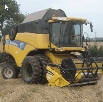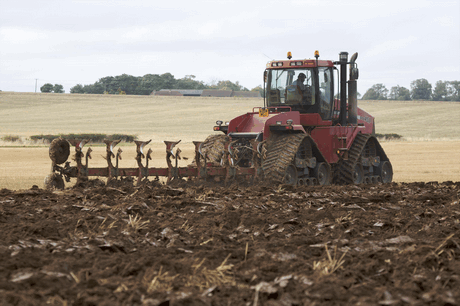Oilseed rape area and yields likely to be hit by harvest woes

Little oilseed rape has been drilled in areas affected by dreadful harvesting conditions, although there is still time, agronomists suggest.
But seed-bed conditions are important and growers may have to change cultivations and agronomy.
In Somerset, independent agronomist Steve Harrison reported little oilseed rape drilled following wheat, although crops following barley were drilled and doing well.
He suggested growers in the region had a fortnight to play with, provided reasonable seed-beds could be prepared. “The rule is it must go in during September.”
Growers would need to alter seed rates to compensate for the late start, he advised. “For a hybrid variety, go for 60/sq m and with a conventional variety use 80+/sq m.”
Conditions in the north were “challenging”, Dave Robinson of TAG admitted. But in Lincolnshire and Yorkshire, it was fine to drill into the third week of the month. “Crops took a long time to emerge last year, so the dates won’t be that different.”

The plough has been proving useful for some growers this season
There would probably be a yield penalty for late drilling, he noted. That wouldn’t necessarily be because of later drilling, but phoma, pigeons and pollen beetles could all be more significant.
“Realistically drilling late the yield penalty could be 10-25%.”
A lot of growers were contemplating broadcasting into standing crops or on to land that could not be cultivated, he said, with only 50% of the planned area in Lincolnshire drilled so far, and maybe only 30% in NE England. “Without broadcasting and if the weather continues in the same vain, it might not get much better.”
He advised against mauling in a crop. “Wait for a good seed-bed, or switch to an alternative crop. And where there’s lots of water, consider the plough.
“Take advantage of hybrid vigour if you drill, and don’t commit to a pre-emergence herbicide. Wait until you know you have a crop.”
He also advised against a dramatic increase in seed rate. “You’ll end up with lots of small plants, which is storing up a problem for next year. Increase seed rate by 10%, no more.”
In Shropshire, independent agronomist Bryce Rham said not much oilseed rape had been sown. “Land that’s been min-tilled is a no-go area. Those who still have a plough are finding it very useful.”
He advised growers to wait for good conditions for a seed-bed and to look at long-range weather forecasts before drilling rape. “It will help you make a decision.”
A bag of nitrogen at drilling could also help, he suggested. “You’re allowed to do it if you can justify it.” It was also sensible to bait trap for slugs. “You can’t afford to lose any plants with a late-drilled crop.”
Growers who couldn’t get on heavy land could decide not to drill anything this autumn, he added. “They’ll save a considerable sum on fertiliser and could still drill spring barley next year. Winter beans are another option.”
In contrast to the north and west, oilseed rape crops in Essex were already at the expanded cotyledon stage, Graham Brooks of Prime Agriculture said. “Most of the rape is in and up, but it had to be sub-soiled in, so it’s not very pretty.”
In Scotland, Allen Scobie of Bridgend Partners said most of the crop – which tended to follow winter barley – was already in the ground. “But it’s not as far on as most would like. It’s a week later than it should be.”
Crops which weren’t drilled by the end of this week probably shouldn’t go in, he warned.
OSR drilling advice
- Latest drill dates vary by region
- End of September in south, sooner as you go north
- Wait for a good seed-bed
- Plough useful, particularly where very wet
- Adjust seed rates
- Use hybrid varieties
- Consider not using pre-emergence herbicide
- Bait trap for slugs
- Consider N use

